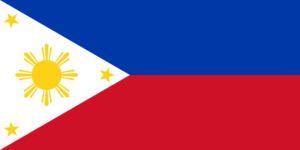
Invest in Davao Oriental
Rubber Industry
Industry Background/Situationer
Hevea brasiliensis is the scientific name of a natural rubber tree. It is a perennial agricultural commodity that has a significant role in the economy of developing countries such as the Philippines. Over 20 million families around the world are dependent on rubber cultivation for their basic source of income.
Demand for the commodity grows annually because of its indispensable use in industrial, technology breakthrough, medical advancement, fashion statement and household uses. Among the particular products out of rubber includes airplane & truck tires & accessories, door and window profiles, hoses, belts, matting, flooring & dampeners, anti-vibration mounts, gloves, toy balloons, rubber bands, paint, adhesives
in paper, carpet & textile manufacturing companies and a lot more.
The recent medical breakthrough has seen the successful implant of a natural rubber component product in the human pancreas.
Natural rubber is largely produced in Asia, accounting for almost 94% supply to the global requirement (Thailand, Indonesia, Malaysia & Philippines). The Philippines has a highly significant contribution to the production of natural rubber, being the 6th in world rubber producing country. These production areas are located in Mindanao, particularly in North Cotabato and Zamboanga (Sibugay).
The development of rubber in the province of Davao Oriental is very promising with its substantial agricultural area, soil and climate conditions that remain ideal for mass production. The existing demand which is increasing by 15% to 20% annually, is a prime consideration in industry development. The provincial record shows a total of 2, 247.0 hectares planted to rubber, located in Baganga, Cateel, Manay, Lupon, and Governor Generoso. Challenges of the industry were in the natural calamities/ long dry spell that beset the province, causing only 186,000 trees producing latex out of the 570,000 productive trees.
Rubber cuplumps are the end product that planters from the province initially markets in neighboring provinces and cities. In support of the industry, the government comes up with the production of rubber crepe a semi-processed product that commands higher market price.
Transferring of the technology to those plantations with ready materials are now underway to enhance productivity thus, level up the income of the farmers. Promotion of natural rubber tree production is sustained by
the provincial & respective local government of Davao Oriental to counter the production shortage experienced by the local industry
QUICK FACTS
| Total Land Area | 516,446 ha |
| Total Agricultural Area | 315,600 ha |
| Total Area Into Rubber Industry | 2,247.0 Has |
| Total No of Planters | 2,014 |
| Total No of Has in Productive Stage | 1,454.0 Has |
| Total Current Production (MT) | 310.0 |
| Total Areas Tapped | 155 Has |
Market Potentials
• Growing Domestic & export market brought by
multiple uses of the product
Existing Facilities
• Technology on rubber crepe making
• Support programs from provincial and
respective local government units
• Skills in rubber processing
Existing Players
• Rubber planters
• Rubber tappers
• Local traders
• Rubber cuplump producers
Investment Potentials
• Expansion of rubber plantation areas
• Rubber sheet/crepe processing & other products
• Warehousing & Trucking services
• Tire processing plant
• Paint processing plant
